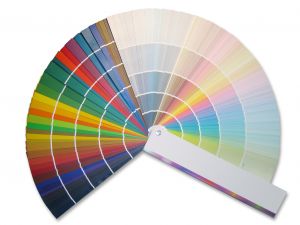 A brand logo can become a valuable corporate asset — just ask Playboy, Nike, or Apple. These brand logos have become so iconic that they don’t even need to include the brand name. Remember when Starbucks launched a new logo in 2011? The new logo design omitted the Starbucks name. Dropping text from a logo is a huge milestone for a brand. Take a look at Interbrand’s list of the most powerful brands in the world in 2013, and you’ll see many brands with iconic logos that hold a significant amount of brand equity.
A brand logo can become a valuable corporate asset — just ask Playboy, Nike, or Apple. These brand logos have become so iconic that they don’t even need to include the brand name. Remember when Starbucks launched a new logo in 2011? The new logo design omitted the Starbucks name. Dropping text from a logo is a huge milestone for a brand. Take a look at Interbrand’s list of the most powerful brands in the world in 2013, and you’ll see many brands with iconic logos that hold a significant amount of brand equity.
Of course, a powerful brand logo doesn’t evolve overnight. It requires relentlessly pursuing the three fundamental rules of branding—consistency, persistence, and restraint—to have a chance to build substantial equity in a logo. A powerful logo passes the one-color logo test and is designed with consideration of how gender affects color perceptions and how color affects consumer behaviors. There is a reason why two colors dominate web branding.
Today, brands must be visual because the world is more visual than ever. Your brand logo is a critical component of your visual brand and marketing strategy. While I’m not an advocate of spending hundreds of thousands of dollars or millions of dollars on logo design, it is an extremely important investment that deserves adequate prioritization and budget dollars.
In the infographic shown below, you can see how well some companies can affect consumer perceptions and behaviors through the emotional power of logos. The importance of building emotional connections between consumers and your brand is irrefutable. Take a look at the information in the logo and you’ll gain some useful insights into the intangible brand value that a logo can support.
It’s interesting to see the infographic data related to age and logo recall which shows children as young as two or three years of age are capable of remembering logos and the products they represent. I think most parents could attest to that data. For example, just put a McDonald’s logo in front of most children in the United States and the majority of those kids are likely to recognize it and know what it promises. The golden arches are universal to people around the world and at any age, and that’s the definition of a powerful brand logo.
What do you think? Leave a comment below and share your thoughts.
Image: Gabriel Del Castillo
Lucy is Editor at Corporate Eye




No matter how good your logo is, it is important to update it from time to time. Changes in consumer wants and societal aspects can happen on the drop of a hat and you need to be ready to flow with that. Take for instance many websites over the last couple years that have gotten a complete remodel to look new and clean. When I visit an older looking site immediately a little of their validity is lost.